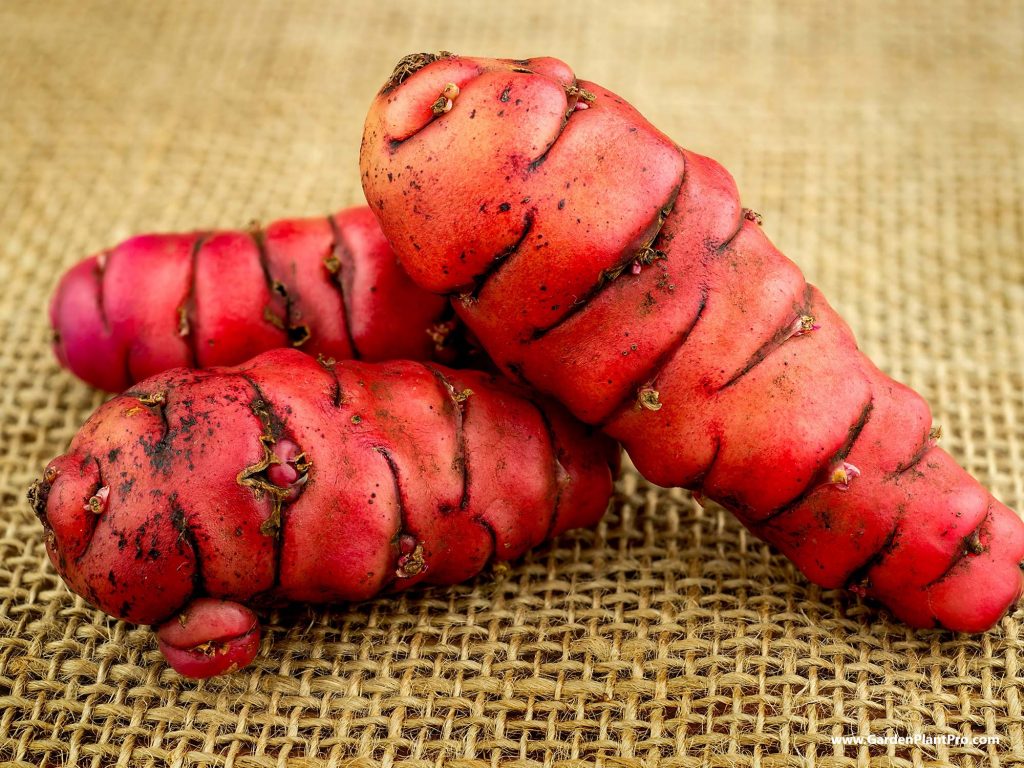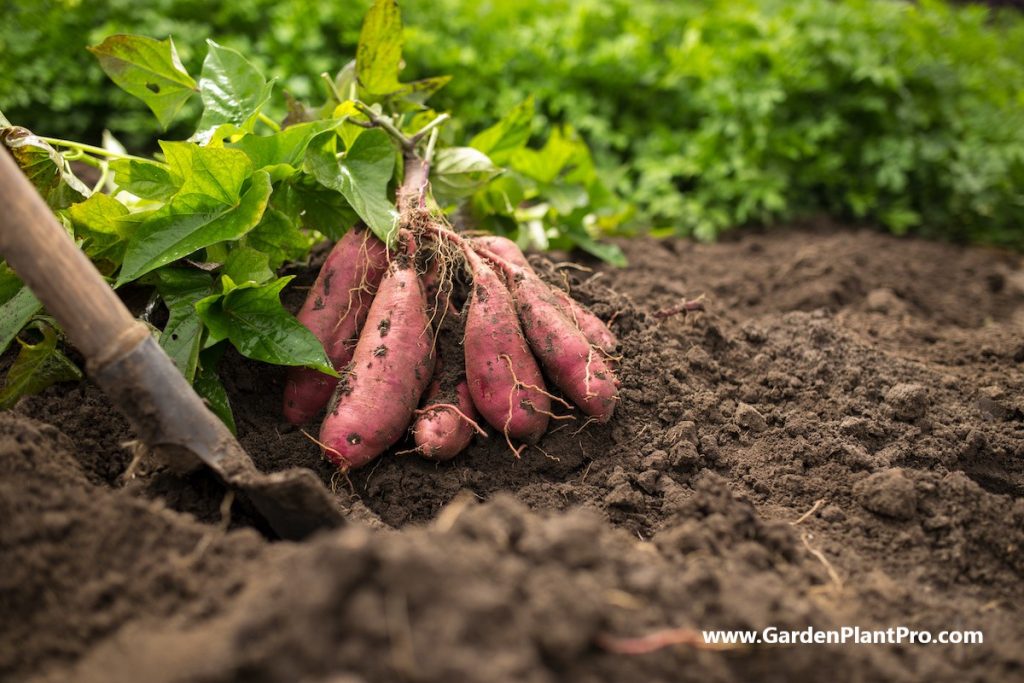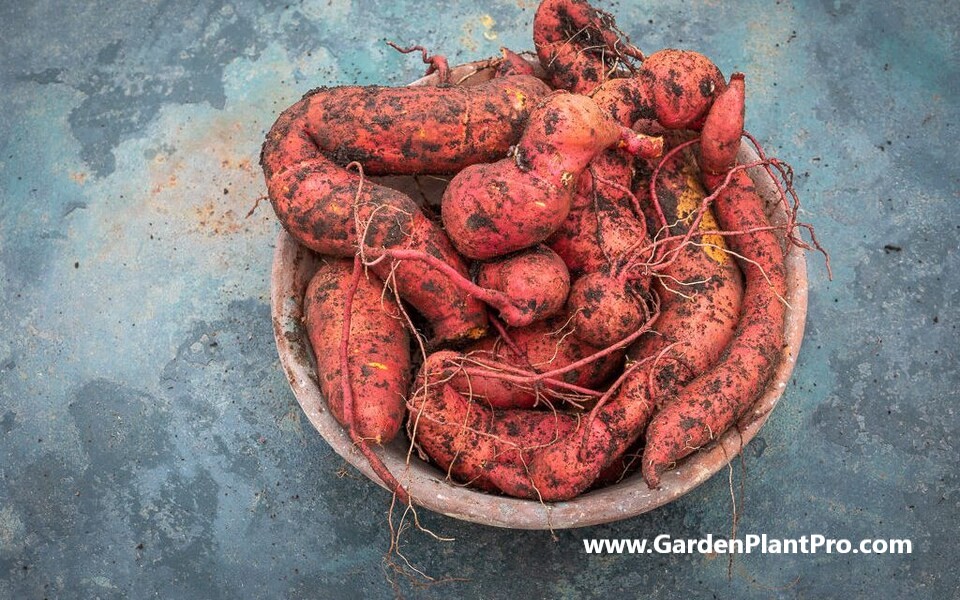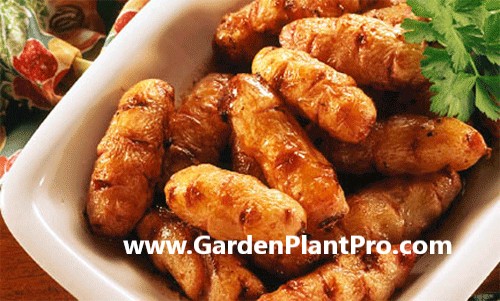Yams are not only a tasty and versatile vegetable, but they are also an excellent addition to any backyard garden. Growing yams may be a pleasant and rewarding experience whether you are an expert gardener or just starting out. They are not only reasonably easy to cultivate, but they are also high in key elements that are required for a balanced diet.
This guide will walk you through the whole process of growing and harvesting yams in your own backyard food garden. We’ll go through everything from choosing the best yam type to preparing the soil to planting, caring for, and harvesting your yams. So, roll up your sleeves, put on your gardening gloves, and let’s get started growing some tasty and nutritious yams.
A Brief History
Yams have a long and fascinating history, stretching back centuries.
They originated in Africa and were believed to have been one of the first crops to be cultivated. Later, they were brought to the Americas by slaves, who grew them for their own sustenance. In some parts of the world, yams are still a major food crop and are used in everything from soups to stews.
Yams are also valued for their medicinal properties. In some cultures, they are used as a treatment for various ailments such as fever, colds, and digestive problems. In addition to being a nutritional powerhouse, yams are also known for their high concentrations of vitamins A and C, as well as thiamine, riboflavin, and niacin.
Today, yams can be found in many different varieties and can be grown in a variety of climates. While they typically thrive best in tropical climates with plenty of rain and sun, yams can also be grown in temperate climates with some success. With proper care and attention, yams can easily be grown at home for delicious dishes or for medicinal purposes.
Nutritional Benefits
Yams are an incredibly nutritious root vegetable that have been enjoyed for centuries.
Not only are they packed with essential vitamins and minerals, but they also contain a variety of beneficial plant compounds. One cup (136 grams) of yams provides 158 calories, 5 grams of dietary fiber, 17 milligrams of vitamin C and 19 milligrams of calcium. Yams are also a good source of B vitamins, including folate, thiamin, niacin and riboflavin. In addition, yams are rich in potassium and manganese, with each serving providing 369% of your recommended daily intake of vitamin A.
Eating yams can provide a variety of health benefits. For starters, their high fiber content makes them excellent for improving your digestive health and preventing constipation. Additionally, the high levels of vitamin A support healthy eyesight and may help reduce the risk of certain eye diseases.
Yams are also thought to be beneficial for weight loss due to their low calorie content and filling fiber content. Eating yams can also help improve cholesterol levels due to their high levels of beta-carotene and other antioxidants that have been linked to lower levels of bad cholesterol (LDL).
When looking for yams to add to your diet, there are several varieties available. Sweet potatoes are the most popular variety in the United States, but there are also other types such as Japanese yams, Chinese yam and Okinawan sweet potatoes. All varieties provide similar nutritional benefits, so it’s up to you which one you choose based on taste preferences or availability.
Now that you know the nutritional benefits of yams, you can start planting them in your garden. With their high nutrient content and delicious flavor, it’s easy to see why yams have been enjoyed for centuries around the world.

Common Varieties & Their Uses
Yams are a diverse group of plants that have many different varieties and uses. Knowing the different varieties and their uses can help you choose the best one for your garden.
The most common type of yam is the white yam, which is most commonly found in West African and Caribbean countries. White yams are large, starch-rich tubers with a mild, earthy flavour. They are very versatile and can be cooked in a variety of ways. White yams are also used to make a variety of sauces, soups, stews, and side dishes.
The yellow yam is another popular type of yam. It has a mild flavour and a soft texture, making it great for mashing or roasting. Yellow yams are also often used to make chips or fries.
The purple yam is another popular variety and is most commonly found in the Philippines. It has a sweet flavour and is often used to make desserts such as cakes, pies, tarts, custards, ice cream and more.
The red yam is also popular around the world and has an earthy flavour with hints of sweetness. Red yams can be boiled, mashed or roasted and are often used as a side dish or in soups and stews.
When growing your own yams at home, it’s important to choose the right variety for your climate and soil type. If you’re new to gardening, white or yellow varieties may be the best option as they tend to thrive in most conditions.
For experienced gardeners looking for something more unique, purple or red varieties may be worth exploring as they have unique flavours and textures that can add something special to your dishes.
When To Sow
Yams are frost tender, so they should be planted after the risk of frost has passed in early spring. They can then be harvested in autumn or early winter after the first frost has knocked the tops down and they begin to die down.
DIY PROJECT: Collect rainwater no matter where you live...
This DIY project is the best way to legally collect rainwater NO MATTER where you live. Get chlorine-free water, cut down on your water bills, and have enough for an emergency situation or to water your garden. Read More Here...
It is important to water the soil well and leave it for a few days before planting. It is also important to keep in mind that yams need regular watering and should be kept moist but not waterlogged. They are generally drought tolerant, but keeping them moist will ensure healthy growth and strong yields.
Choosing A Suitable Location In The Garden
Choosing a suitable location for planting yams is an important step in achieving success with this crop. When selecting a spot in the garden, ensure it is in a sunny spot with plenty of space, and a free-draining soil. If possible, look for somewhere that is sheltered from strong winds as this can damage the vines.
Yam vines can grow up to 3 metres in length and will require some form of support, such as a fence or trellis. You may also wish to consider planting your yams near other plants that can act as beneficial companions, such as beans or cucumbers.
Once you have chosen your location, it is important to prepare the soil well. This involves adding compost or sheep pellets and digging it over to create furrows between rows.
Preparing The Soil
Preparing the soil for growing yams is an essential step in ensuring a successful harvest. Before planting, it’s important to make sure that the soil is rich and well-draining.
Clear the land of any weeds or debris before the rainy season, and cut down any trees that may be blocking sunlight. Dig large amounts of aged compost or well-rotted animal manure into the soil, and mix in some sheep pellets to help increase fertility. If you live in a particularly dry area, you may also want to add some organic mulch to help retain moisture.
Planting The Seeds, Seedlings Or Tubers
When planting yams, it is important to choose a variety that is suitable for your climate and soil type.
The most commonly grown variety is red-skinned, but you can also get yellow and apricot varieties. Seed can be planted from late winter to early spring at a depth of 3-5cm. Tubers should be planted at 5cm deep with 40cm spacing between each tuber.
When planting seedlings, make sure to place the new growth upwards and cover them with soil or compost. Water the bed well and cover with a layer of mulch.
If planting your potted yams, simply plant to the same depth they were in the pot. Yams prefer fertile, free-draining soil so it is important to mound up around them when planting. It is also important to keep any lime away from them as this can damage the tubers.
Once planted, water regularly and ensure that weeds are kept in check as they can compete for resources with the young plants. With proper care, you should be able to harvest your yams within 8 – 10 months of planting.
Caring For The Seedlings
Once the yams have been planted, the seedlings need to be cared for properly in order to ensure a successful harvest. Water the seedlings regularly, making sure not to overwater as this can cause root rot. For best results, use warm water when watering and water deeply.
Keep any weeds at bay by hoeing between the rows on a regular basis and using mulch if necessary. Fertilize monthly with a balanced fertilizer, and provide some shade during the hottest part of the day. Yams are also susceptible to certain diseases and pests, so be sure to check for signs of disease or pests and treat accordingly.
Finally, beneficial companion plants can help improve soil fertility and attract beneficial insects, so consider planting some alongside your yams. With the right care and attention, you’ll enjoy a successful harvest in no time.
Watering & Fertilizing
Watering is a key factor when it comes to growing yams. The soil should be well-drained, and the plants should never be allowed to sit in waterlogged soil. A mulch of well-rotted compost or grass clippings can help retain moisture and keep the roots cool. Yams should be watered deeply and regularly, allowing the top layer of soil to dry out between waterings.
When it comes to fertilizing, a general fertiliser such should be mixed into the soil at planting time (early spring). Subsequent applications can then be made every couple of months, or as needed. Over-fertilizing can cause poor yields, so it is important to exercise caution and follow the instructions on the packaging carefully.
It is important to remember that while yams do need nutrients to thrive, they are not heavy feeders. Too much fertilizer can cause foliage problems, including yellowing and wilting leaves. As such, a light hand with the fertilizer is recommended.
Do you have some charcoal in your house right now? We call charcoal a “miracle leftover” for anyone who wants to be a little more self-sufficient and cut costs. That’s because it can help you with so many different things around the house and garden. You can even use it to make an energy-free fridge. Read More Here...

When & How To Harvest
When it comes to harvesting yams, timing is everything.
Yams are ready to harvest as soon as their shamrock-like green tops die down, but don’t rush to dig them up too soon. Tubers won’t start to fatten until right at the end, so wait until the vines have died down and the tubers have stopped pushing through the soil before harvesting. Cold weather before harvest also tends to improve the flavour of yams, so in frost-prone regions, it can be beneficial to wait until after the first frost.
Before harvesting, mound the soil around each plant with a garden fork. This will help prevent any tubers from being damaged when you pull them from the ground. Make sure you check for any small aerial tubers that may have formed on the stem, as these need to be picked off before a heavy frost. Then gently pull each tuber from the ground and brush away any excess soil.
Once harvested, it is important to handle your yams with care. Store them in a cool, dry place for up to two weeks for best results. If you have a large crop of yams that you wish to store for longer periods of time, they can be stored in boxes or bags in a cool cellar or garage. You may also wish to preserve some of your harvest by curing them or canning them in jars.
Storing & Preserving
Storing and preserving your yams is an important part of the growing process. After harvesting, yams should be cured for about 10 days in temperatures between 65-75 degrees Fahrenheit. This helps to toughen the skin and improve their storage potential. After curing, you can then store your yams in a cool, dark, and dry place with adequate ventilation. The ideal temperature range for storing yams is between 55-60 degrees Fahrenheit.
When storing yams, make sure to keep them away from any direct sunlight and away from other fruits and vegetables that may exude ethylene gas, which can cause the yams to spoil. You should also check your yams on a regular basis for any signs of spoilage. If you find any spoiled sections, cut them off and discard them immediately.
You can also preserve your yams by freezing or canning them. To freeze your yams, wash and peel them before boiling or roasting them in the oven until they are soft. Once the yams have cooled, cut into cubes or slices before placing into freezer-safe bags or containers. To can your yams, make sure to use only high-quality jars with new lids to ensure proper sealing. You can either pressure can or water bath can your yams depending on the desired outcome.
Storing and preserving your home-grown yams is an important part of the growing process that will allow you to enjoy their delicious taste all year round.

Common Diseases & How To Control Them
Common diseases can occur when growing yams, and it is important to take preventative measures to ensure the health of your crop.
Disease free tubers/setts should be used for planting, and treating them with hot water for 40 minutes at 50-55°C before sowing and after harvest can reduce infection.
The area should also be kept weed-free during growth as aphids spread viruses, and extra space should be allowed between the plants. Mulching with well-rotted compost or grass can help conserve soil moisture, and fungicides can be used to treat fungus-related illnesses.
Keep foliage dry, and choose a location for your garden that will receive morning sun. Soil should be well-draining, and a general fertiliser can help the plants grow.
Here are some of the more common diseases yams are susceptible too:
Powdery Mildew is a fungal disease that appears on leaves as a white powdery material. Remove sick plant sections, enhance air circulation around plants, and avoid watering foliage in the evening to manage it.
Leaf Spot. This disease develops brown or black patches on the leaves. To keep it under control, remove affected leaves and minimise overhead watering. If the condition persists, use a copper-based fungicide.
Root Rot is caused by overwatering, which promotes fungal development in the roots. Improve soil drainage, reduce watering frequency, and remove afflicted plants to manage it.
Bacterial Wilt: This disease causes plant withering, yellowing, and eventually death. Avoid overhead watering, rotate crops, and remove diseased plants to manage it. To inhibit spread, use a copper-based fungicide.
CASE STUDY: We've been living off the grid for the last 40 years...
In all that time an electric wire has never been connected to our house. We haven’t gotten or paid an electricity bill in over 40 years, but we have all the electricity we want. We grow everything we need, here, in our small backyard. We also have a small medicinal garden for tough times. Read More Here...
The most important thing is prevention: use slips that are resistant to disease, keep the area weed-free, allow extra space between plants, mulch well, keep foliage dry, and choose a sunny location with well-draining soil. If disease does occur, however, fungicides can help manage symptoms.
Common Pests & How To Control Them
Yam growers must be on the lookout for common pests that can damage their crop. These include aphids, weevils, wireworms, and mites. To prevent infestations, it is important to practice good garden hygiene, such as removing weeds, disposing of infected plants, and keeping the area clean.
Aphids can be controlled with insecticide sprays. Weevils can be controlled by cutting off the infected plants at least one inch above the soil. This leaves nearly every weevil egg in the plant bed and helps reduce the spread of diseases. Wireworms can be controlled by using trap crops such as potatoes and carrots or using insecticides or nematodes. Mites can be controlled with insecticidal soap or horticultural oils applied regularly during the growing season.
Beneficial Companion Plants
When it comes to growing yams, having beneficial companion plants can help to ensure a successful harvest. Marigolds are a great choice as they produce a scent that repels both animals and pests. In addition, they can help to encourage healthy plant growth and ward off diseases.
Banana trees also make great companions as they provide shade in higher temperatures. Other good companion plants for sweet potatoes include potatoes and beans, both of which are said to improve the flavor of the yam.
When planting yams, it’s important to ensure that they are 8-10 centimetres deep and 30cm apart. When planting companion plants such as marigolds or banana trees, it’s important to make sure that they are at least 25cm away from the yam plants so that the roots have enough space to spread out. Additionally, it’s important to keep the soil around them well watered and fertilized in order to promote healthy growth.
Once the plants have grown, it’s important to keep an eye out for common diseases and pests that could affect your crop. Regular inspections can help you spot any issues early so that you can take steps to control them before they become a major problem.

Using Your Home Yams In Cooking
Once your yams are harvested, it’s time to put them to good use. Yams are an incredibly versatile vegetable that can be used in a variety of dishes. Here are some tips on how to use yams in cooking:
Roasting: Cut the yams into cubes, drizzle with oil, sprinkle with salt and pepper and roast in a preheated oven at 425°F until golden brown.
Boiling: Peel the yams and cut into cubes. Bring a pot of salted water to a boil and add the cubes. Boil until the yams are tender when pierced with a fork.
Mashing: Boil or bake the yams until soft, then mash them in a bowl. Add butter, milk, salt and pepper to taste and mix until creamy.
Steaming: Cut the yam into cubes or slices and place in a steamer basket over boiling water. Steam for 10 minutes or until tender.
Stir Frying: Peel and slice the yam into thin slices or wedges. Heat oil in a wok or skillet over medium-high heat, add the yam slices, season with salt and stir-fry for 3-4 minutes until lightly golden.
Yams can also be used in soups, stews, casseroles and pies. For sweet recipes such as cakes or muffins, you can replace sweet potatoes with yams for an unusual twist on classic favorites. With these ideas, you can now enjoy your home grown yams in delicious dishes.




